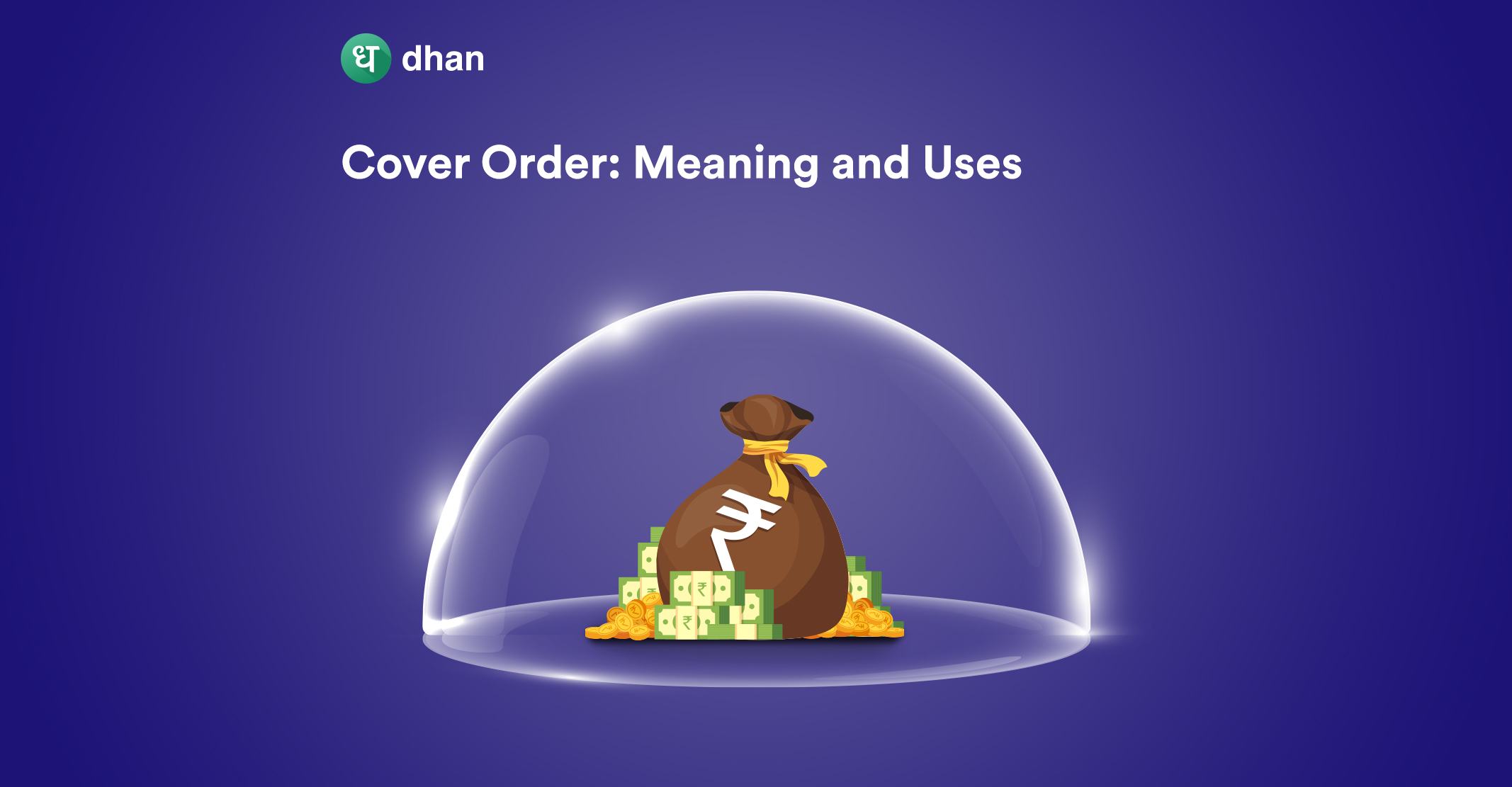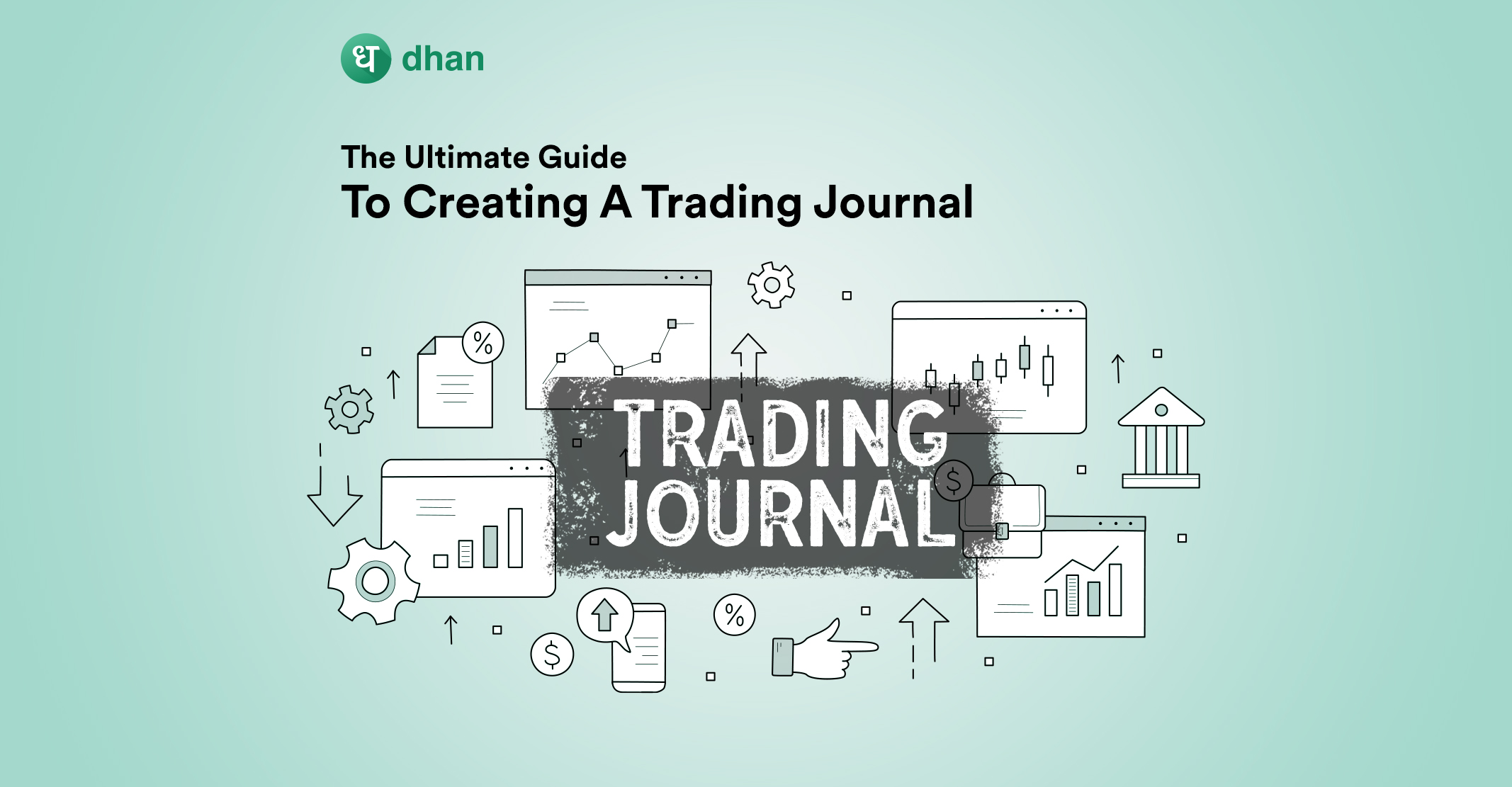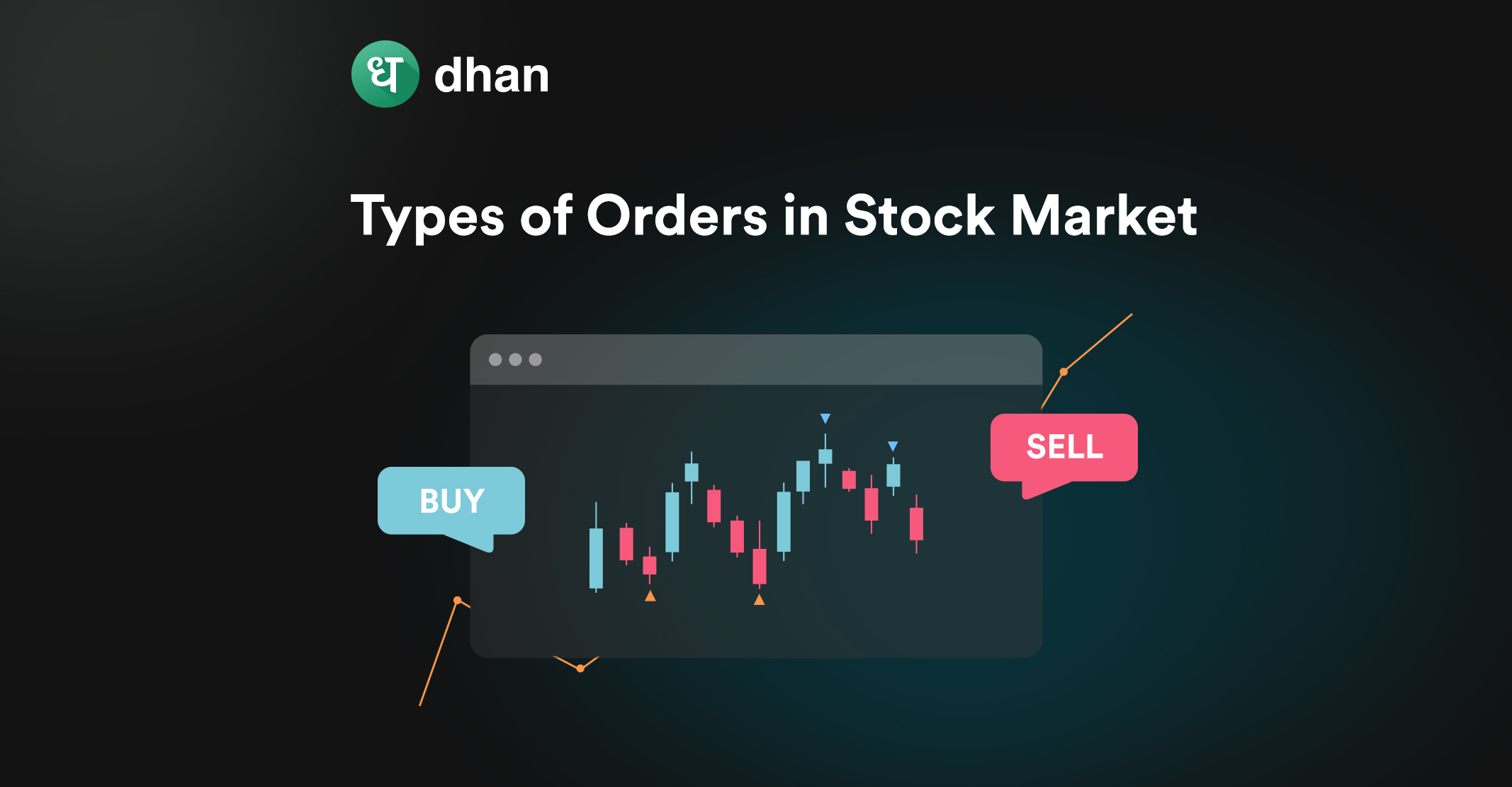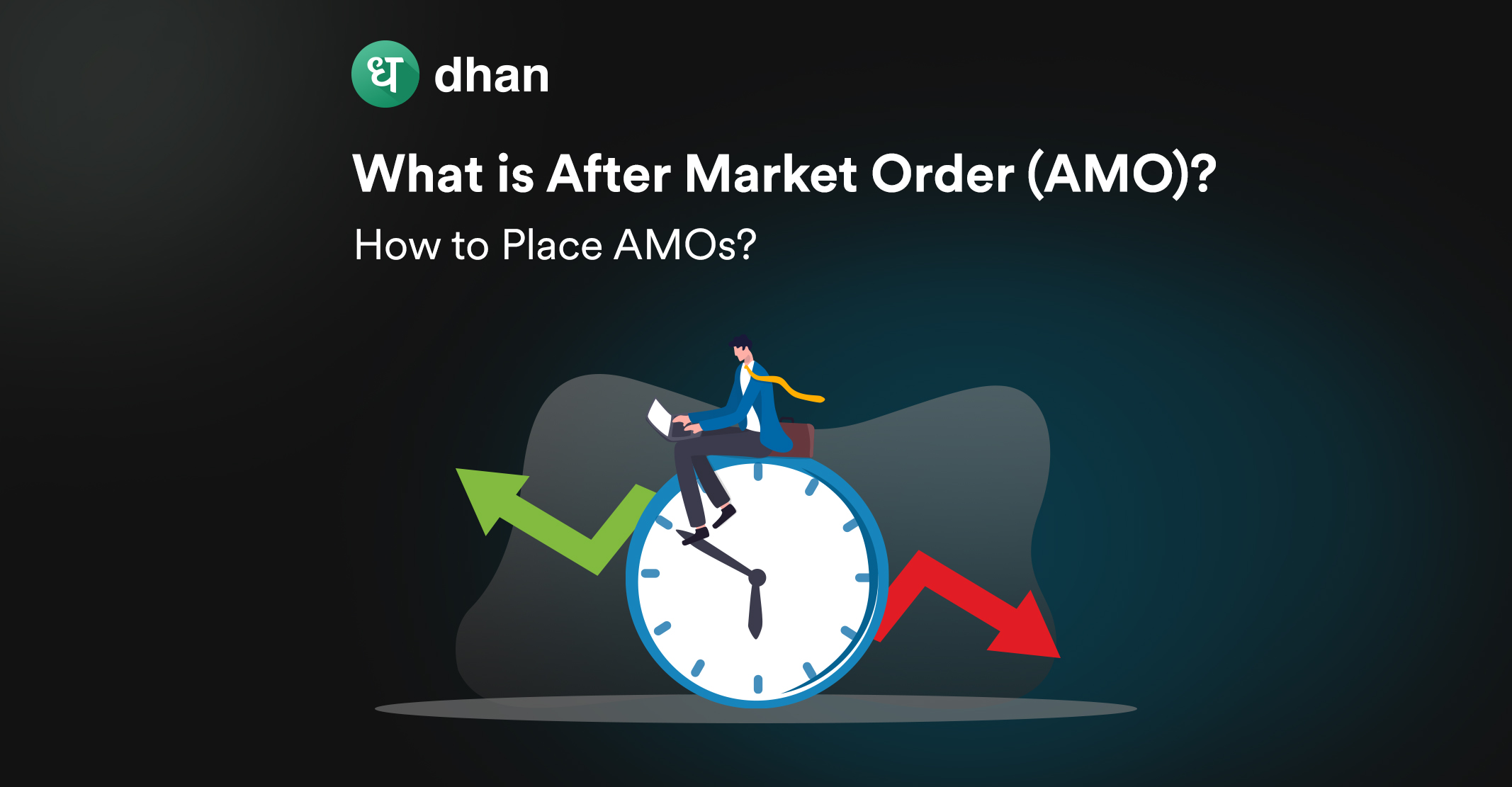By having the safety net of risk management tools, traders can participate in the market with much more confidence.
These tools give traders a better chance of preserving capital and limiting losses. Cover orders are one such tool.
In this blog, we will see in-depth what is cover order and how you can use it to your advantage for online intraday trading.
What is Cover Order?
A cover order is a combination of a Market/Limit Order and a Stop-loss that is used specifically in intraday trading.
As the name suggests, it helps a trader cover their capital against risk while day trading futures, options, shares, and other financial instruments.
Once you place a cover order either with a limit or market order, a price has to be entered for the stop loss order.
This in-built risk mechanism of a cover order helps you to minimize losses if the price moves in the opposite direction.
In fact, your intraday position will be closed as soon as the Stop-Loss price is triggered, thereby limiting your loss.
This risk minimization also helps you and the broker to opt for higher leverage, as the risk management is already contained in the covered order. That’s why you’ll see a ~5x margin while day trading.
Every cover order remains valid for the duration of one trading day, which is from 09:15 AM to 03:30 PM if you’re trading stocks.
Cover Orders Versus Regular MIS Orders
Margin Intraday Square Off or MIS orders are a common type of intraday trading order that you’ll see on the Order Window.
If a trader places a regular MIS order, they intend to manually buy or sell the security at the Market Price without a Stop-Loss, meaning their positions are vulnerable to whipsaw while trading.
On the other hand, cover orders have an in-built risk management mechanism because they come with a Stop-Loss.
Furthermore, a regular MIS order is a manual order that the trader will have to square off to avoid auto square-off charges.
Thus, cover orders are suitable for those who want the freedom to move away from their screens during market hours, while regular MIS orders are placed by those who want to monitor their positions closely.
Types of Cover Orders
There are two types of cover orders, both of which are designed to help you as a trader manage risk.
1. Long Cover Order
A long cover order is a “buy” order at the Market/Limit price that is combined with a Stop Loss.
Your position will be squared off as soon as the price hits the Stop Loss, which will be a certain amount below the buy price, thereby helping you manage risk.
2. Short Cover Order
A short cover order is a “sell” order, and the stop loss order would be higher than the selling price.
Again, the purpose of a short cover order is to help you manage risk, but this time around, you’ll be taking a short position. The Stop Loss will be triggered once the selling price rises higher
Benefits of Using Cover Order
Imagine you place a buy order and the market moves in the opposite direction suddenly, leaving you with a pile of losses.
This whipsaw can potentially wipe out your capital, which is the opposite of why you’re trading in the first place.
As a trader, you ultimately trade to generate a higher return on your capital. That’s why a cover order is crucial while intraday trading.
A cover order’s primary goal is to manage risk and provide you with better control of your trades. It helps you stay disciplined because by default there is risk management in place.
This eliminates your reliance on emotional trading and is more realistic and practical for your trading approach even when the market goes the other way.
Not to forget, you’ll be the one setting the stop loss, meaning your maximum loss will be predefined.
At the same time, you’ll be able to access more leverage, which can further be enhanced with features like pledging of shares.
Thus, the benefits of trading with a cover order can be summarized as follows:
- Helps manage risk
- Eliminates emotion
- More leverage
Disadvantages of Using Cover Order
Cover orders are designed for intraday trading. That’s why the Stop-Loss is active during one trading session, not beyond.
Moreover, over-reliance on Stop-Loss orders without a solid understanding of the market may lead you to enter or exit bad positions frequently. The case may be severe during extreme volatility.
Prices move rapidly during volatile markets and can trigger Stop-Loss orders at undesirable prices. This scenario or “slippage” can cause unexpected losses.
That said, cover orders are available for a limited set of financial instruments, and not all brokers may allow it for all segments/exchanges.
This limitation may restrict you from using cover orders for specific assets or markets.
Even if you do place a cover order, gap up or down markets will have the potential to push the Stop-Loss price to undesirable levels unless there’s Market Price Protection in place.
How to Place a Cover Order?
If your broker allows you to place a cover order, you’ll see it on the order screen along with other types of orders.
On Dhan, you can place a cover order for stocks, index options, and currency futures. We’re planning to extend this feature to other segments as well in due course of time.
The following steps will show you how to place cover orders on Dhan App and Web:
1. Select a stock you’re tracking
2. Click on the Buy/Sell button
3. Tap on “Trading”
4. Select “Cover”
5. Choose Market/Limit Price
6. Add a Stop Loss
Done! That’s how simple it is to place a cover order. The key is to define your stop loss levels to the tee and also determine your entry and exit strategy well in advance.
Bear in mind that a cover order can only be placed during the stock, commodity, or forex market hours in India, especially because the order type is available exclusively for intraday trading.
Mistakes to Avoid While Using Cover Order
While a cover order is simple to place, you must practice being cognizant while placing it. The following points are the common mistakes that traders make while placing a cover order.
1. Not Calculating Stop-Loss Level
Selecting a random Stop-Loss happens more often than not. You must ensure that you determine the optimal percentage and absolute numbers to decide on the Stop Loss level while placing a cover order.
2. Choosing the Wrong Order Type
Choosing a regular MIS order instead of a cover order is a mistake that a novice intraday trader may make.
In fact, seasoned traders may make this mistake as well during fast-paced markets.
That’s why you must be doubly sure that you’re selecting the right order type.
3. Not Monitoring Cover Orders
Although cover orders have a Stop-Loss in place, you must monitor your position to keep pace with the intraday market. There may be volatility or gaps that lead to undesirable Stop-Loss executions.
Cover Order vs Bracket Order
Cover and bracket orders are both risk management tools that traders use for intraday. While they share some similarities, both orders have distinct features that set them apart.
As we’ve discussed across this blog, a cover order combines Market/Limit Orders with Stop-losses to cover your capital against risk.
The primary objective is to limit potential losses and provide more control over each trade.
When you place a cover order, you set a specific price for the Stop-loss order, and if the market moves against your position, the trade is automatically squared off once the Stop-loss price is triggered.
On the other hand, a bracket order is a more comprehensive tool that includes a target profit price as well as a Stop-loss. It “brackets” your trade between a profit level and a loss level.
When you place a bracket order, you set both the Target Price and Stop-loss, thereby limiting the downside but setting a predefined level for the upside.
Difference Between Cover and Bracket Order
The main difference between cover orders and bracket orders is the risk-reward approach.
However, cover orders focus solely on limiting losses, while bracket orders help limit losses and set profit targets.
This means that cover orders are suitable for traders primarily concerned with risk management and minimizing losses in the intense world of intraday trading.
On the other hand, bracket orders can be suitable for traders who want a well-rounded approach, targeting both profit and risk management.
By the way, you can automate Cover and Bracket orders with trading APIs. Watch the video below to know how!
Conclusion
While the cover order meaning is clear, it is important to use it to your advantage cautiously. Ultimately, trading right means protecting your capital and managing your emotions.
One of the ways to manage your emotions is to have a robust risk management system in your trading plan. Cover orders can help you manage risk-reward efficiently.



